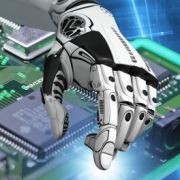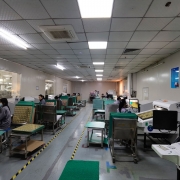An Illustrated History Of Printed Circuit Boards
An Illustrated History Of Printed Circuit Boards
The first printed circuit board (PCB) was developed in the 1930s by Paul Eisler, who studied engineering and was a magazine editor before taking up the field of electrical engineering. Eisler had the idea that printing on paper could be used for more than just newspapers. He developed the idea in a tiny one-room flat in Hampstead, London.
Moe Abramson
The history of printed circuit boards has been influenced by many technological developments. Some of the first PCBs were created by Moe Abramson, a computer engineer who helped develop the auto-assembly process. Abramson also developed copper foil interconnection patterns and dip soldering techniques. His process was later improved upon, and his work led to the standard process of manufacturing printed circuit boards.
The printed circuit board is a circuit that mechanically supports and electrically connects electronic components. It is typically made from two or more layers of copper sheets. Its manufacturing process allows for higher component density. It also has plated-through holes for electrical connections. More advanced PCBs also incorporate embedded electronic components.
Stanislaus F. Danko
The history of printed circuit boards dates back to the mid-20th century. Before that, electronic components had wire leads and were soldered directly to the PCB’s trace. The first auto-assembly process was developed by Moe Abramson and Stanislaus F. Danko, who were members of the U.S. Signal Corps. They patented this process, and it has since become the standard method of printed circuit board fabrication.
Printed circuit boards are an important part of electronic devices. From their humble beginnings in the mid-19th century, they have become commonplace. Their evolution has been driven by rising consumer demands. Today’s consumers expect instant response from their electronic devices. In 1925, Charles Ducas developed a process called “printed wire” to reduce the complexity of wiring. Dr. Paul Eisler built the first operational PCB in Austria in 1943.
Harry W. Rubinstein
The history of printed circuit boards has been largely shaped by a man named Harry W. Rubinstein, who served as a research scientist and executive with Globe-Union’s Centralab division from 1927 until 1946. Rubinstein was responsible for several innovations while at Centralab, including improved roller skates, spark plugs, and storage batteries. However, his most famous invention was the printed electronic circuit.
The history of printed circuit boards starts in the early 1900s, when electronic components used to be soldered onto a PCB. The PCB had holes for wire leads, and the leads were inserted through those holes and then soldered to the copper traces on the board. However, in 1949, Moe Abramson and Stanislaus F. Danko developed a technique that involved inserting component leads into a copper foil interconnection pattern and dip soldering them. This process was later adopted by the U.S. Army Signal Corps, and eventually became a standard way to fabricate printed circuit boards.
Surface mount technology (SMT) components
SMT is a technology that allows electronic components to be applied directly to the surface of a printed circuit board (PCB). This allows for more efficient production and a more compact design. It also reduces the number of drilled holes, which can result in a lower production cost. SMT components are also more robust and can withstand higher levels of vibration and impact.
The major advantage of surface-mount technology over through-hole components is that it is highly automated and reduces the number of failures during the welding process. In addition, SMT components are much cheaper to package than their THT counterparts, which means the selling price is lower. This is a huge advantage for those clients who are looking for large-volume printed circuit boards.
Multiple layers of copper
PCBs with multiple layers of copper are constructed from multiple layers of copper foil and insulating material. The copper layers may represent a continuous copper area, or they may represent separate traces. The conductive copper layers are connected to each other using vias, which are thin channels that can carry current. These conductive layers are often used to reduce EMI and provide a clear current return path. Listed below are some benefits of using copper on printed circuit boards.
Multilayer PCBs are more costly than single-layer boards. They are also more complex to manufacture and require a more complicated manufacturing process. Despite the high cost, they are popular in professional electronic equipment.
Elektromanyetik uyumluluk
Electromagnetic compatibility (EMC) is an important aspect of a product’s design. EMC standards are a prerequisite for ensuring safe operation of products. The design of a PCB must be electromagnetically compatible with its components and environment. Typically, printed circuit boards do not meet EMC standards on the first pass. Therefore, the design process should be centered on meeting EMC standards from the beginning.
There are several common techniques to achieve electromagnetic compatibility. One method involves putting a ground layer on a PCB. Another method involves using ground grids to provide low impedance. The amount of space between the grids is important in determining the ground inductance of the circuit board. Faraday cages are another way to reduce EMI. This process involves throwing ground around the PCB, which prevents signals from traveling beyond the ground limit. This helps reduce the emissions and interference produced by PCBs.


